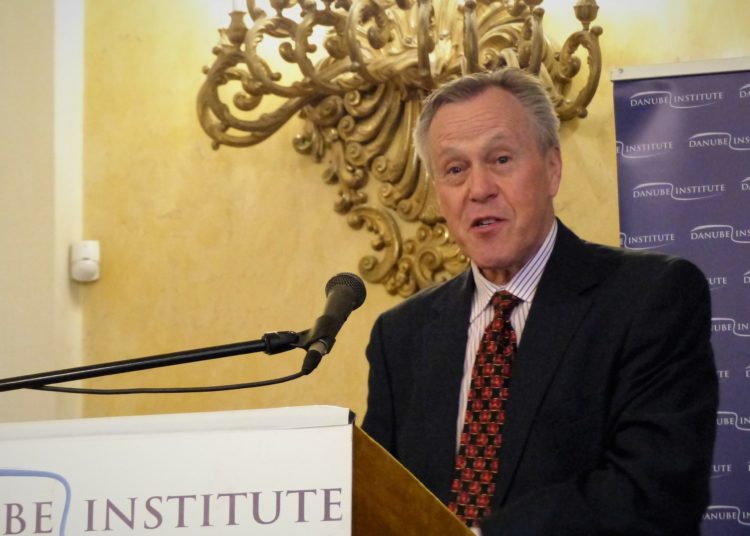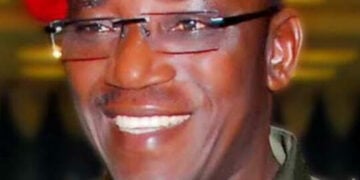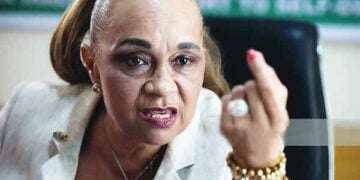In a time of instability and disruption, how does an organisation maintain loyalty and the trust of its stakeholders?
Instability and disruption create and spread uncertainty. Uncertainty about what can be done and uncertainty about what‘s going to be possible in the months and years to come. To thrive in these increasingly fast-paced and disruptive times, leaders need to optimise their capability to successfully manage change. Of course, this is difficult, given that over 70% of change initiatives fail.
Trust and credibility are critical to successfully implementing transformation but are particularly essential for success in turbulent times. So the best way to maintain trust and credibility both with your own team and with your customers and the wider public? Be unfailingly honest about current difficulties and how you plan to tackle them. Nothing is more annoying for customers than a business partner who makes false promises or runs into unforeseeable delays but pretends that everything will be delivered on time when he or she knows that that can’t happen.
Honesty is difficult. It needs a trustworthy team who feel they can give corporate leaders bad news. It often requires more transparency than a company might typically feel is comfortable. And it relies on ruthless accuracy about what’s going wrong and what it might take to fix it.
Another thing to think about is presenting yourself as people who’ll do more than necessary. Don’t make current difficulties an excuse to deliver poor performance.
Show that your whole aim is to crash through those difficulties and get the job done for the customer, even if that means extra work (and some extra expense!) for yourself. Your best business hopes may come from customers who know that you delivered what they expected despite plenty of difficulties and so are pleased to recommend you to others. For example, TEXEM, UK, never cancel programmes because stakeholders trust them, given that 70% of their clients come on repeat business.
Post-pandemic, to effectively and efficiently communicate intent, ambition, and promise to stakeholders, what are the defining factors for organisations?
It‘s fine, to be honest. But you need your colleagues and customers and business partners to hear that you’re honest.
This means having the knack of finding just the right tone. Of course, this tone must be conveyed by any speeches or interviews given by corporate leaders and supported by just the right messages and interactions on social media.
This requires careful thought about what EXACTLY you want to say and where you want the emphasis of your message to fall. For example, do you want to be reassuring – but realistic? Or realistic – but reassuring? All very subtle!
Plus, some of this can be done by personal touch. If you have a client who needs your equipment but suddenly you face a delay caused by external problems, give that customer a call to let them know what‘s happening and what is a credible timeline for getting things back on track. Then they can at least adjust their planning and know that you are genuinely considering their needs. Many organisations cease to exist once the founder dies, given that the new managers do not have the requisite credentials to effectively engage stakeholders, which was a unique selling point of the founder. To glean more insights about utilising values to unlock scarce resources for sustainable success irrespective of challenging headwinds, attend TEXEM’s forthcoming executive development programme on Building Resilience scheduled to hold between 22-25 August in Birmingham, UK.
What ideologies should a post-pandemic organisation be rooted in to thrive in this age of disruption?
One ‘ideology’ that’s worth considering is how your organisation deals with mistakes. Do you have a company policy on this, and how is it communicated downwards through your teams and outwards to customers and the wider public?
Mistakes come in all shapes and sizes and are hard to manage because they are typically unpredictable. Different behaviours cause different sorts of mistakes. Laziness, carelessness, negligence, recklessness and simple stupidity each have their implications for how to tackle the ensuing problems and then take smart steps to make sure that the behaviour concerned is not repeated. Mistakes could cost a business its existence if it makes a company complacent and ignores the needs of the customers. Blackberry is an excellent example of a successful company that made costly mistakes by not listening to customers and living in denial. Blackberry insisted on producing phones with full keyboards — despite consumers‘ preference for touchscreens-we know the result-loss of market leadership and the ultimate death of the company.
One fundamental corporate culture that can be actively encouraged is getting your people quickly, to be honest when a mistake has happened, and not trying to cover it up or assign the blame to someone else. The damage caused by a mistake is often manageable if the error is tackled promptly. But everything can get much worse much faster if someone pretends that a mistake has not happened or tries to cover it up.
Here too, there’s a subtle balance to be struck. You want your team promptly to admit mistakes, but you also want them to know that mistakes are bad and that they must set tip-top standards of accuracy as their default way of working.
Above all, the signals sent from top management are all-important. If employees see their corporate bosses making mistakes and getting away with them, why should they think that their company takes mistakes seriously? Nevertheless, there are specific ways that leaders and their organisations can turn challenges into opportunities despite complex operating contexts, which the forthcoming TEXEM programme on Building Resilient organisations for sustainable success will address.
With a gradual and progressive return to the workplace, how do organisations help their
stakeholders?
By being honest and reliable. And by emphasising that the core culture of the organisation going forward is Excellence, with No Excuses.
The response to the pandemic in many countries has created a ruinous, if not pathological social nervousness amidst ignorant aversion to normal risks.
Nothing is more insidious or philosophically dangerous than the idea that every risk has to be ‘managed’ or mitigated or otherwise controlled by the state. Being open and honest about risk and encouraging intelligent risk management awareness can be a helpful message for any innovative modern business. Having a strategic approach to decision-making where all stakeholders have a symbiotic win-win outlook will lead to the success of all stakeholders as it is in their enlightened self-interest for all to succeed. To glean more insights on how to thrive during volatile, uncertain, complex and ambiguous times, you need to sign up for the forthcoming TEXEM programme on Building Resilience For Sustainable Success In An Age Of Disruption.
Why should executives attend this forthcoming TEXEM programme?
Executives should attend this forthcoming TEXEM programme on Building Resilience For Sustainable Success In An Age Of Disruption for many reasons. First, this is a very topical programme that every organisation and their leaders need. Second, the quality of faculties, such as Professor Paul Griffith, the world‘s first professor of management to lead a team to launch a rocket and John Peters (Former Prisoner of War and Chair of AMBA, accreditors of Harvard and INSEAD) will share valuable insights and challenge assumptions. Also, the TEXEM methodology, which comprises games, simulation, group discussion, role-play, observation, case studies, panels, and self-reflection, makes learning personal, fun, interactive and a thought-provoking experience. For example, the first day of the programme, the 22nd Of August, entails a working visit to Cadbury World. Gerald Baldwin, director of Cadbury world, will share insights into how the organisation has remained successful 250 years since it was founded. It also includes a visit to Shakespeare‘s birthplace and a boat ride. Importantly, through this forthcoming executive development programme, participants will learn from each other, network and enhance their social capital. As a result, bumper return on investment achieved from attending this programme is assured and in manifolds.
Who is Ambassador Charles Crawford?
The University of Oxford trained Amb. Charles Crawford is a strategic communication and negotiation specialist and public speaking expert. A qualified barrister and mediator, he draws on 28 years‘ experience in the UK diplomatic service, much of it spent in former communist central and Eastern Europe. Charles Crawford leads the Executive Communication and Technique programme at The Ambassador Partnership LLP, an international panel of former Ambassadors offering corporate diplomacy services to governments, international organisations and businesses. In his early diplomatic career, he served as FCO communication adviser to Foreign Secretary Sir Geoffrey Howe. He has contributed to strategic communication by members of the Royal Family and successive Prime Ministers, as well as Ministers and others in public and commercial life. In 1987 he wrote the UK Foreign Office’s first Guide to Strategic communication; it remains the basis for the FCO’s strategic communication training. Since leaving the FCO at the end of 2007, he has delivered presentation skills programmes for the private sector and public sector clients, including the United Nations, IAEA, CTBTO, OPCW, European Commission, different European foreign ministries, the Communist Party of Vietnam, and the head of a Western intelligence agency. In addition, he frequently appears on the UK and international media to discuss global policy issues and diplomatic techniques (CNN, Sky News, BBC, ITV, Voice of Russia, ABC).
For more information, please email [email protected] or call +447425883791
* * * * *





